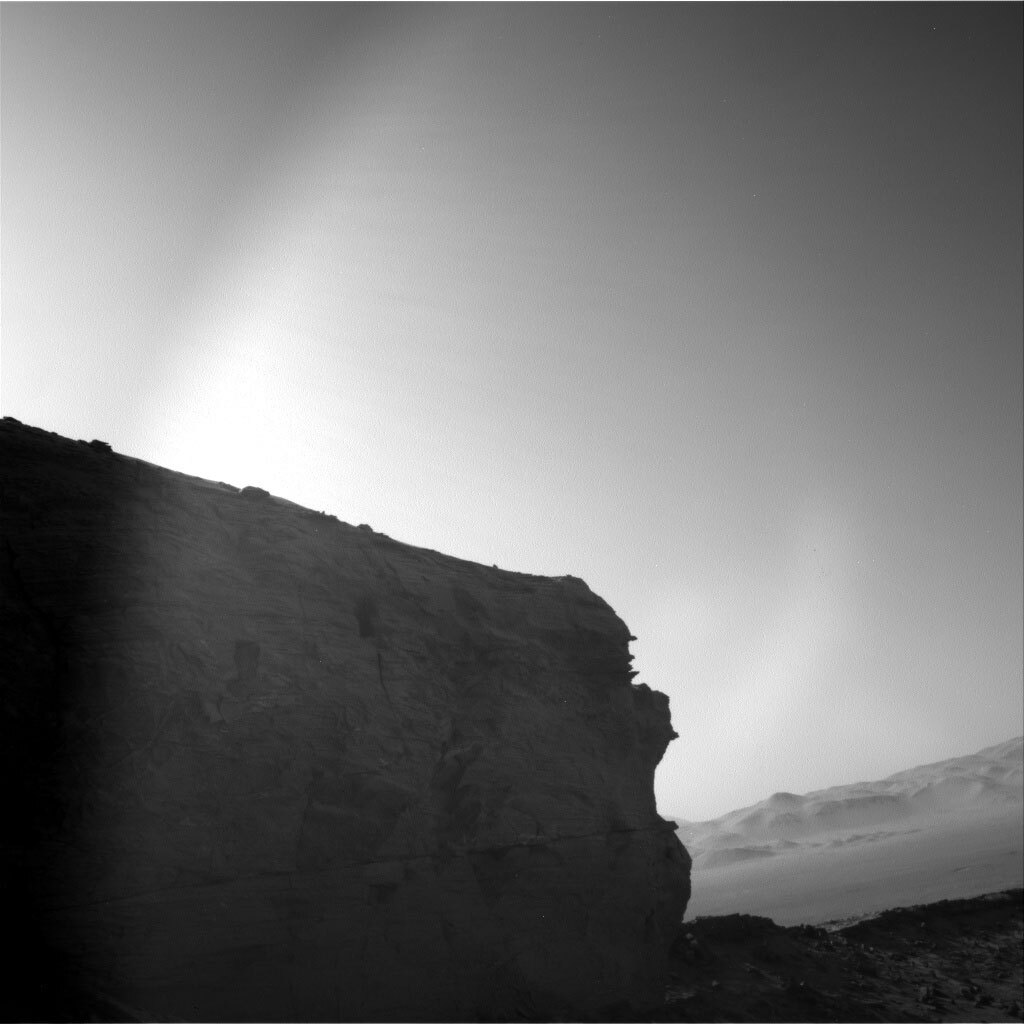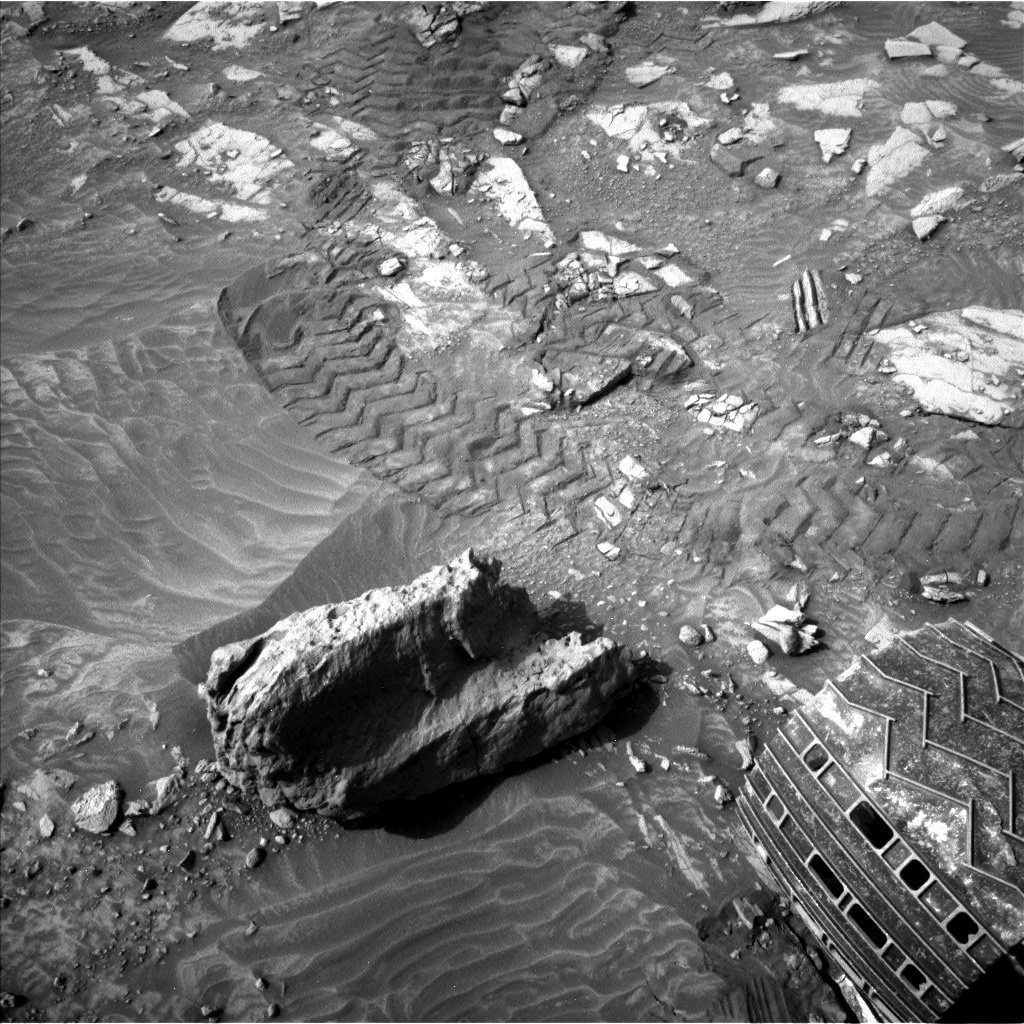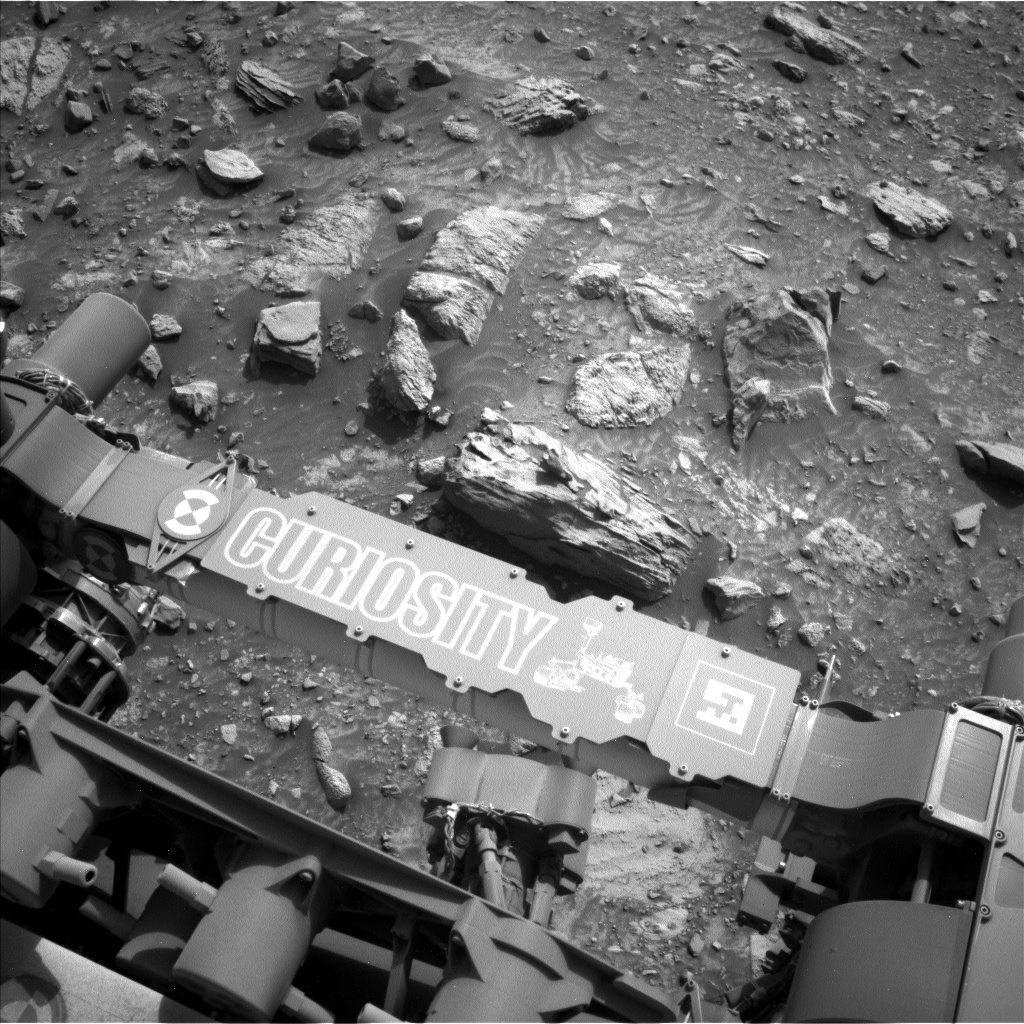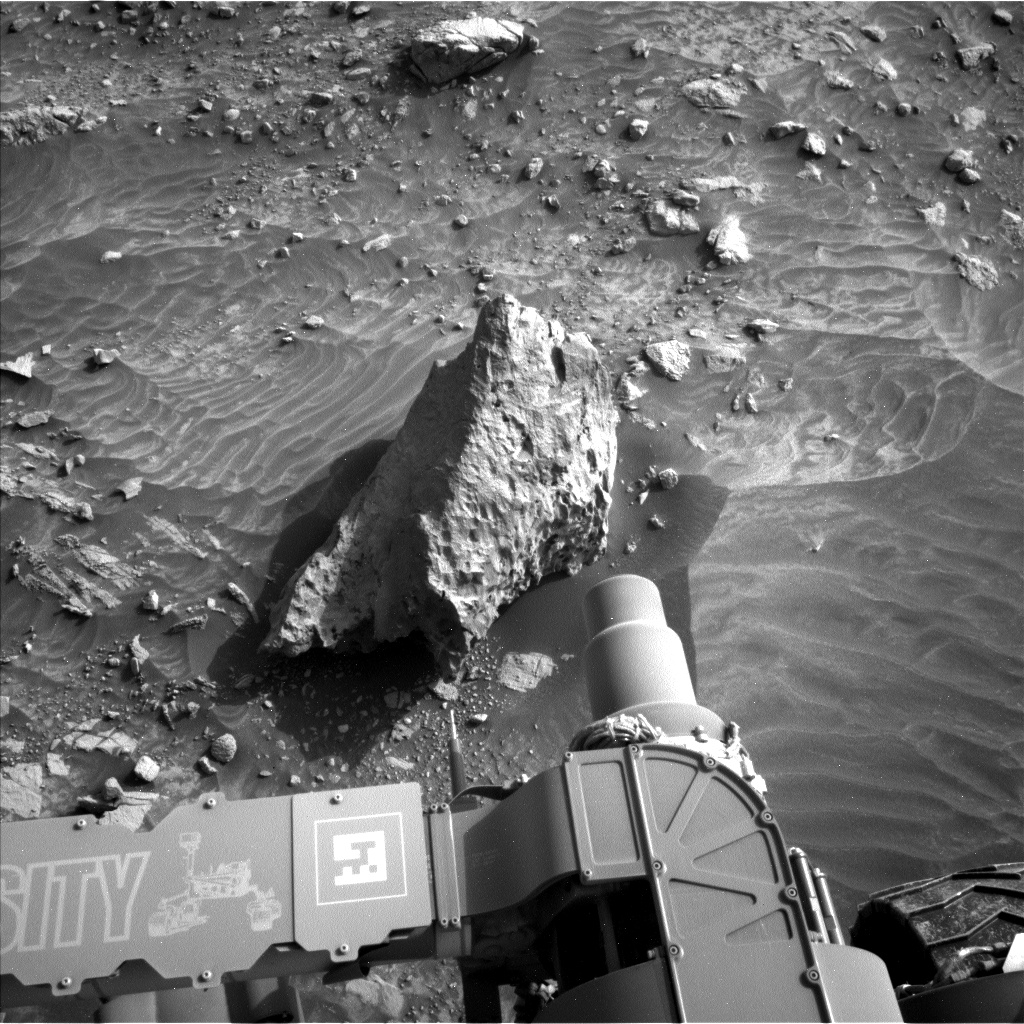2 min read

Curiosity ended its Wednesday afternoon drive in shadow when it parked just a few meters away from the towering western wall of Maria Gordon notch. While this location gives us spectacular views of the layering, veins, and nodules exposed on the side of the outcrop, it was actually chosen to support an experiment with Curiosity’s neutron spectrometer, DAN (Dynamic Albedo of Neutrons). DAN has the ability to measure the amount of hydrogen, a proxy for water, around the rover. The instrument is sensitive to surroundings all around Curiosity, although usually the only interesting signature comes from the ground beneath the rover where the instrument can detect water bound within hydrated minerals. Parking close to the side of Maria Gordon notch gives us an exciting opportunity to see information with DAN from both the ground and the wall next to the rover, which will help us refine our understanding of DAN data throughout the mission. We’re actually going to measure the area with DAN in three different positions: our current parking position and two more planned during today’s drive. The drive will place Curiosity perpendicular to the cliff and then parallel again, but a little bit closer than we are now. It’s a little like a rover version of an almost three-point turn!
In addition to the DAN experiments, we’ll also collect APXS and MAHLI observations on two pebbles in front of Curiosity, one with pits ("Helens Bay") and one without pits ("Lakeheads"), as well as ChemCam observations of "Orlock Ridge" and "Hailes Quarry." And of course since we’re at such an amazingly scenic location, we’ll make sure to take lots and lots of Mastcam mosaics throughout the day.
Written by Abigail Fraeman, Planetary Geologist at NASA's Jet Propulsion Laboratory







